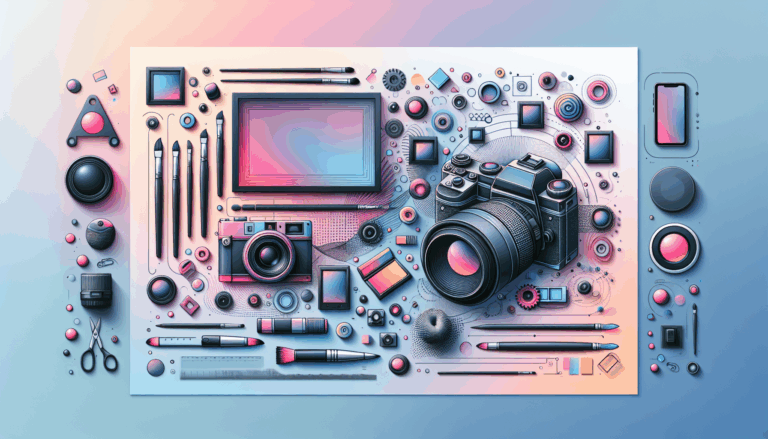Creating Adaptive Layouts Based on Quantum Entanglement Patterns
When it comes to creating innovative and dynamic designs, today’s designers are increasingly looking beyond traditional inspiration sources, including the captivating realm of quantum physics. One fascinating area that has captured the imagination of many is quantum entanglement—a phenomenon where particles become interconnected in such a way that their properties are instantly correlated, regardless of distance. This concept not only challenges our understanding of reality but also offers a unique perspective on pattern creation and layout design.
By embracing entangled layouts as a metaphor, designers can explore new ways to structure and connect different elements within a design, fostering a holistic and interconnected visual experience. This approach can be particularly beneficial when working with tools like Figma, a leading design platform, and when integrating designs into web platforms like WordPress.
Understanding Quantum Entanglement and Its Metaphorical Applications
Quantum entanglement is a quantum mechanical phenomenon where two or more particles become correlated in such a way that the state of one particle cannot be described independently of the others. This concept has sparked interest not only in physics but also in various fields, including philosophy and design, due to its implications on interconnectedness and systemic behavior.
Adaptive Designs Inspired by Quantum Entanglement
A key aspect of quantum entanglement is its ability to adapt and respond to changes in the system instantaneously, which can serve as an inspiring metaphor for creating adaptive layouts. In design, this means creating systems where components interact and adjust dynamically, reflecting the entangled nature of particles. Such designs can enhance user experience by providing more flexible and responsive interfaces that adapt to user interactions.
Designers can achieve these adaptive layouts using Figma by leveraging its robust functionality for dynamic components and responsive design. For instance, designers can create prototypes that adapt to different screen sizes and orientations, mirroring the dynamic adjustments seen in entangled systems.
Quantum Design Principles in Layout Creation
Interconnected Elements
A foundational principle of quantum entanglement is the connectedness of particles. This idea can be applied to design by ensuring that different elements within a layout are interconnected and harmonious, creating a cohesive visual experience. For example, when designing a website using WordPress, you might structure your layout so that each section flows seamlessly into the next, much like the instantaneous correlation between entangled particles.
Dynamic Adaptation
Quantum entanglement also highlights the importance of dynamic adaptation. In design, this can be translated into creating layouts that adjust based on user interaction, screen size, or other environmental factors. Tools like Figma allow designers to prototype such dynamic behaviors, enhancing user engagement and satisfaction.
Implementing Entangled Layouts with Figma and WordPress
Using Figma for Dynamic Prototyping
Figma offers a powerful platform for creating dynamic prototypes that reflect the principles of quantum entanglement. Designers can leverage features like auto-layout, constraints, and plugins to create adaptive components that respond to different user interactions, mimicking the adaptive nature of entangled systems.
For example, ProtoPie and Auto Layout Plus plugins in Figma can help designers create prototypes with adaptive layouts that adjust to user inputs, much like how entangled particles respond to changes in their environment.
Integrating Designs into WordPress
Once you’ve designed an entangled layout in Figma, integrating it into a web platform like WordPress involves converting the design into a responsive web page that maintains its adaptive qualities. This can be achieved by using modern web development frameworks and tools like CSS Grid and Flexbox, which allow for flexible and dynamic layouts.
For a seamless integration, services like Figma2WP can help translate Figma designs into fully functional WordPress websites, ensuring that the adaptive and interconnected design principles inspired by quantum entanglement are preserved.
Real-World Applications and Case Studies
Adaptive Layouts in Web Design
A key example of adaptive layouts in action is the design of responsive websites. These sites use techniques similar to the dynamic adaptation seen in entangled systems to adjust their layout based on different screen sizes and orientations. For instance, a website might use a grid layout on desktop screens and switch to a linear layout on mobile devices, echoing the flexible and interconnected nature of quantum entanglement.
A well-known example of responsive design is the mobile version of Google, which seamlessly adjusts its layout to different screen sizes while maintaining a cohesive user experience.
Quantum-Inspired Concepts in Other Fields
Beyond design, concepts inspired by quantum entanglement have been applied in various fields. For example, reinforcement learning models inspired by entanglement have been used to optimize resource allocation and routing in complex networks, showing the versatility of these principles.
Conclusion and Future Directions
In conclusion, the principles of quantum entanglement offer a fresh perspective on design, encouraging the creation of interconnected and adaptive layouts. By embracing these concepts and utilizing tools like Figma and WordPress, designers can craft dynamic and engaging user experiences that reflect the innovative spirit of modern technology.
Whether you’re looking to optimize your existing design workflow or explore new frontiers, integrating the principles of quantum entanglement into your design process can lead to innovative and responsive designs. If you’re interested in transforming your Figma designs into dynamic WordPress websites, consider reaching out to Figma2WP for expert guidance on turning your vision into reality.
More From Our Blog
Choosing the Right WordPress Theme for Your Visual Storytelling In the thriving world of digital photography, a captivating online portfolio is essential for photographers looking to establish or expand their presence. Selecting the right WordPress theme tailored for photography is the foundation of a remarkable portfolio site. Themes like Fargo, Solene, and Border blend aesthetics Read more…
Understanding Why Nonprofit Websites Need Conversion Optimization For nonprofits, a well-designed website does more than just convey a mission — it serves as the critical platform for engaging supporters, generating donations, and driving action. Yet, many organizations struggle with low conversion rates, where visitors come to the site but fail to take the desired steps Read more…


